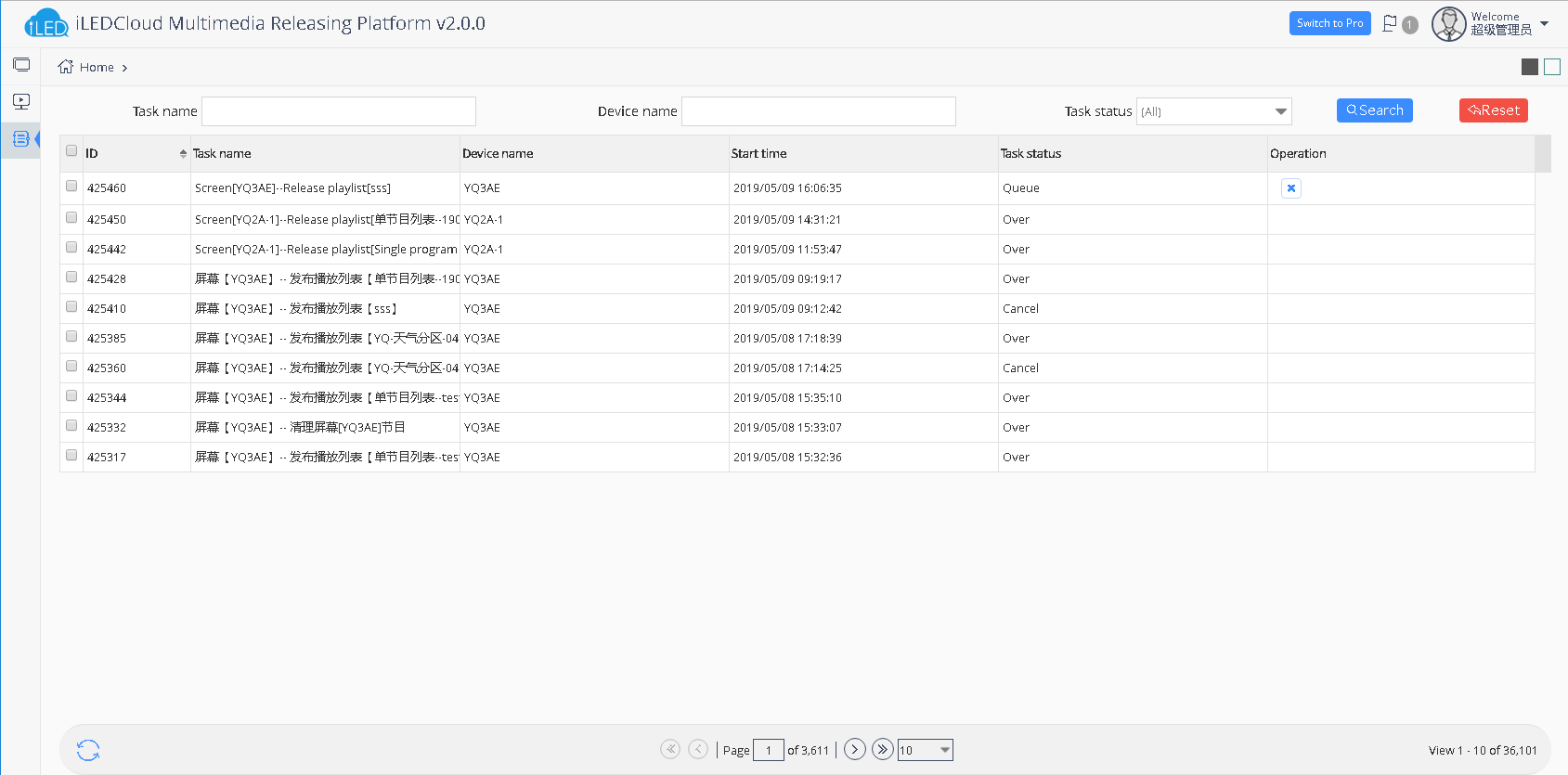5.10 iLEDCloud easy version
iLEDCloud platform is simple and easy to use, professional and stable multimedia information release platform. On the basis of retaining the basic program production, release, screen management and other functions, it reduces the user's operation difficulty and simplifies the operation steps.
The simplified version is mainly for individual users, small business users and users commonly used to publish simple programs.
Simple version provides: screen management, program list, task management three modules, see picture 5.10-1 simple version home page.
Screen management is mainly to add screen modification and switch machine and other operations.
The program list module is mainly used to create and edit the entire program list. The module is divided into list making, list viewing and list publishing.
The simplified version can only use the form of list to present the program, and no longer provides the operation function for the single program.
Task management can view the user's action log.

picture 5.10-1
5.10.1 Screen management
Users can perform relevant operations on the screen in the screen management page of resource management. The page is shown in picture 5.10-2. Some operation button notes on the screen management page as shown in table 5.10-1.

picture 5.10-2
| button | function |
|---|---|
 |
Screen control button,click to set the screen parameters |
 |
Add button to create new records |
 |
Delete button to delete the selected single record or bulk records |
 |
Refresh button to refresh the list |
 |
Empty list button to clean up list |
 |
Restart the controller button |
 |
Adjust the screen brightness button |
 |
Screen time correction button ,select then click this button to make time correction |
 |
Power on button |
 |
Power off button |
 |
purchase the screen price package after select the screen |
table 5.10-1
5.10.2 Program list
Users can make, edit, view, and publish the program list in the program list interface, as shown in picture 5.10-3.The simplified version can only use the form of list to present the program, and no longer provides the operation function for the single program.Some button comments on the page, as shown in table 5.10-2, can then be managed by the action button after each playlist.
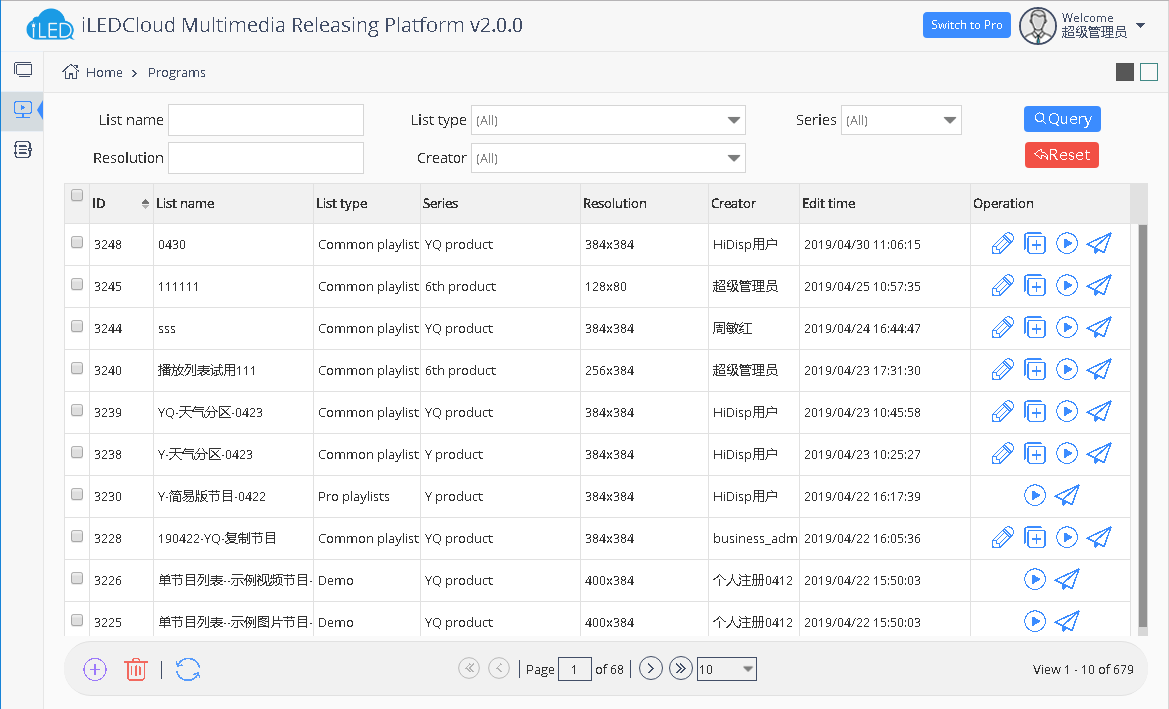
picture 5.10-3
| button | function |
|---|---|
 |
Edit program button ,click to create page,user can secondary edit in the base of original program. |
 |
Preview program button ,click and turn to the program preview page,as shown in picture 5.10-4 |
 |
Copy the display button and copy the current display list. |
 |
Release program button ,click and go to the program release interface as shown in the picture 5.10-5 |
table 5.10-2
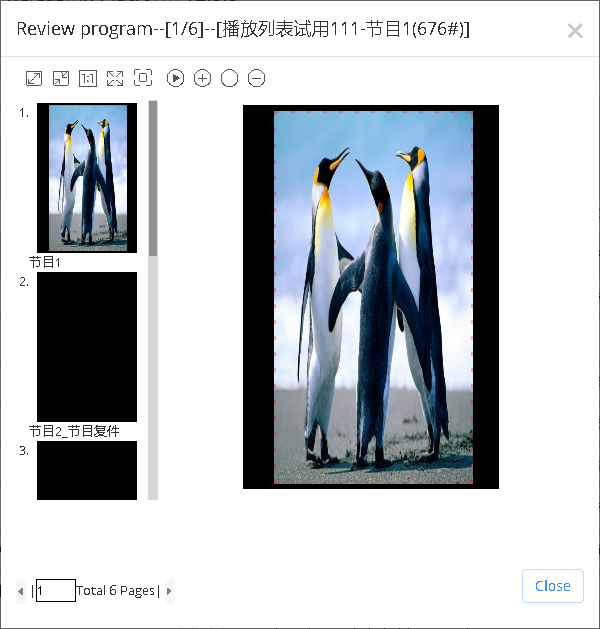
picture 5.10-4
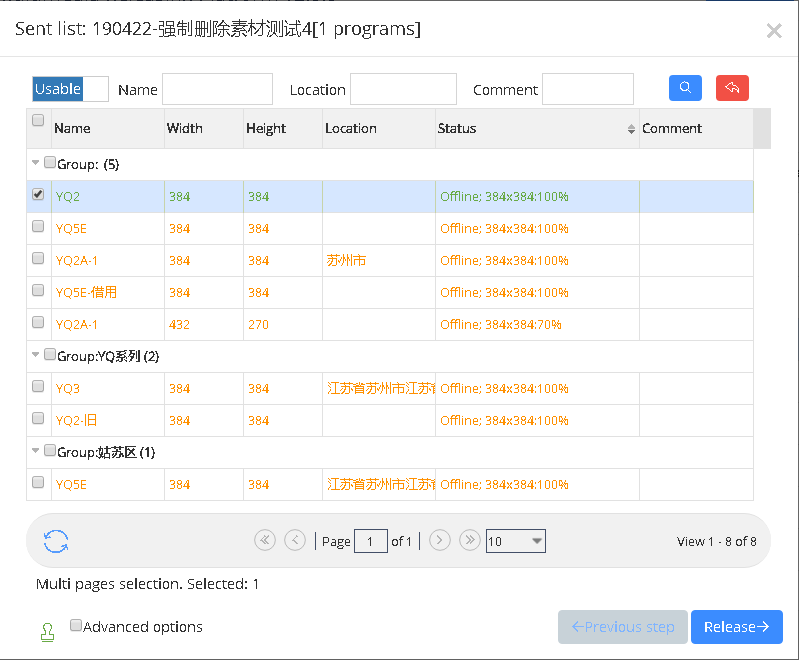
picture 5.10-5
5.10.3 Create the list
In the simplified version, users will directly create and edit play lists, and a single program can only exist attached to each play list.Users can create and edit programs in the program list.If the user wants to create a new program list, click the plus sign in the lower left corner of "program list", as shown in picture 5.10-6. A window for creating a new program list will be displayed on the page.

picture 5.10-6
After creating a new program list, it will enter the production page, which is divided into left, middle and right parts, including playlist, screen, partition and properties, as shown in picture 5.10-7.
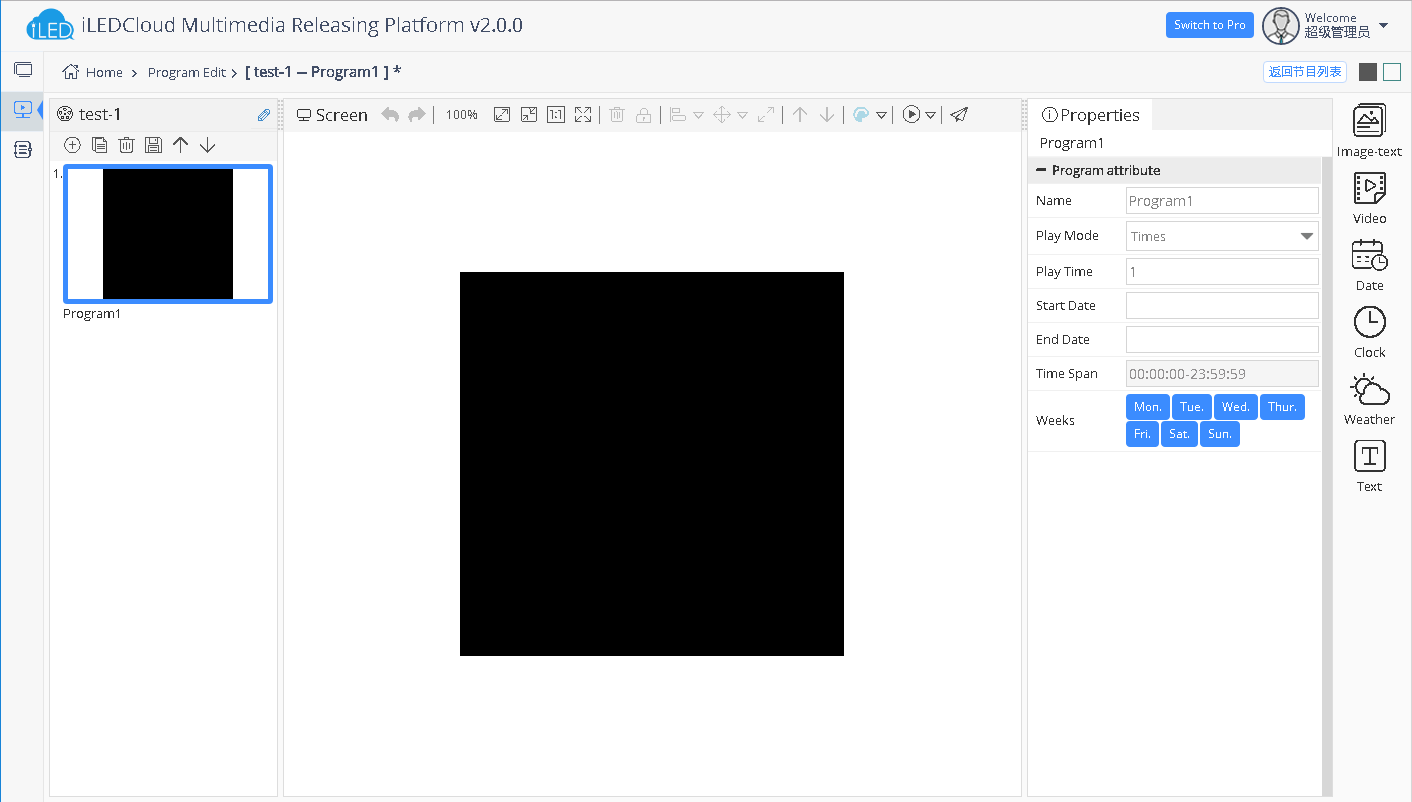
picture 5.10-7
1. on the left of page
On the left is a preview of the playlist, as shown in picture 5.10-8. Each rectangle represents a program, which will be highlighted when selected.Users can add, delete, copy, paste, and adjust the order of programs in the list here, with some button comments as shown in table 5.10-3.
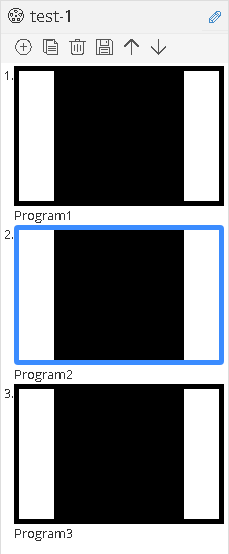
picture 5.10-8
| button | function |
|---|---|
 |
add one empty program in the end of playlist |
 |
copy one same program in the end of playlist |
 |
Delete the selected program |
 |
Save this list |
 |
adjust the program location up and down |
 |
The name of edit list |
table 5.10-3
2. Middle area of the page
The middle area of the page is composed of screen parts for partition placement and effect display, as shown in picture 5.10-9. Some button notes are shown in table 5.10-4.The black area in the middle is the screen, where the user can place the partition for editing.
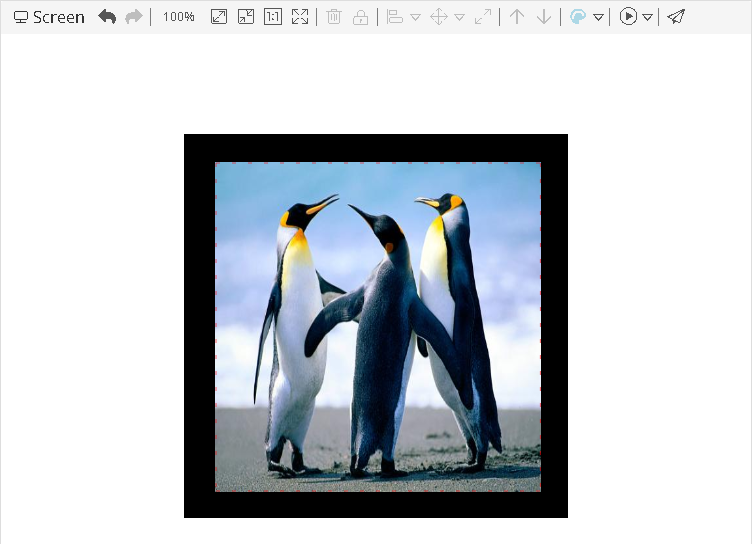
picture 5.10-9
| button | function |
|---|---|
 |
Undo and redo |
 |
Zoom scale, display the current screen zoom scale, can be manually adjusted |
 |
zoom in screen |
 |
zoom out screen |
 |
screen show follow the original size |
 |
display all the screen |
 |
delete the selected zone |
 |
select the locked ,after unlocked then to move |
 |
Alignment, select multiple partitions at the same time to set its alignment (there are multiple alignment options in the sub-menu) |
 |
Size assimilation, which keeps the size, width, or height of the selected partitions consistent (there are multiple size assimilation options in the sub-menu) |
 |
Expand the partition to full screen and fill the screen with partitions |
 |
move up and move down to adjust the structure position of the selected partition |
 |
Non-grayscale program preview button, preview different color mode program effect (sub-menu has "single color", "dual-color" and "tri-color" button) |
 |
Preview the current program (there are buttons of "accelerated play", "normal play" and "decelerated play" in the sub-menu) |
 |
release the program list |
table 5.10-4
3. The right zone of the page
The area on the right side of the page is composed of partition bar, property bar and material bar. The corresponding supported partition will be displayed in the partition bar, as shown in picture 5.10-10. Each partition has different effects, and users can directly double-click or drag to add a partition.At present, there are six simple version of the partition, respectively is image-text, video, date,clock, weather and text partition.

picture 5.10-10
After adding graphic, video, plain text partition, the right area will show the material bar.Users can directly right - click, double - click or drag to add material in the partition.Users can also add materials in the material bar. Just click the add button to complete the adding, as shown in picture 5.10-11.
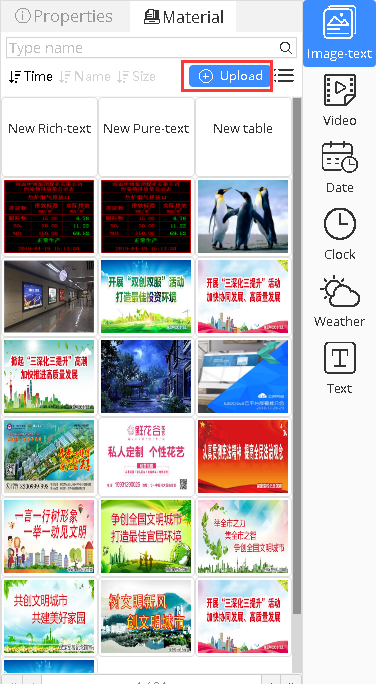
picture 5.10-11
The property bar will display some property values of the current program and the currently selected partition. If no partition is selected, the broadcast property of the program will be displayed. Users can modify the data to change the broadcast mode and duration of the program, as shown in picture 5.10-12.
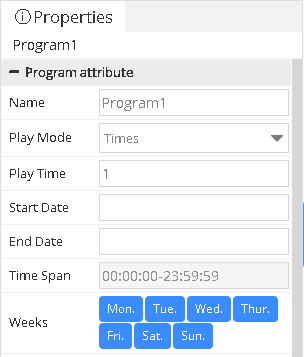
picture 5.10-12
After a partition is selected, the right property bar will show the partition property of the partition. In the simple version, we appropriately reduce the items that can be modified in the partition property according to the user's habits, hoping to shorten the time for the user to make the program.In addition, we have designed the style template for the dial, weather, and time partition, which can be opened in the "style" of the partition attribute. Each partition has 8 styles and 8 shading patterns for users to freely combine and match according to their needs, without requiring users to manually adjust the styles.As shown in picture 5.10-13 below, the dial partition can be used as an example to select the dial style and replace the background pattern.
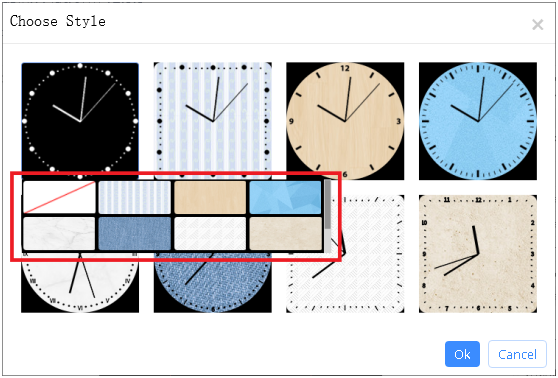
picture 5.10-13
5.10.4 Release the program list
Users can publish the program list in the "program list" and program list production page, and select the corresponding screen in the pop-up publishing wizard (picture 5.10-5) to complete the publishing task.In the simplified version, complete the program list publishing wizard, and the list will be directly and instantly sent to the corresponding screen.At present, the platform can conduct publishing operations and generate publishing tasks for both online and offline screens, and normally complete publishing tasks for online screens.For the offline screen, publishing tasks are automatically completed after going online.
In addition, the simplified version supports the adaptive function. We will calculate the matching rate of the user's program list and other screen sizes according to the formula. If the matching rate is greater than 60%, you can choose to send it to the screen.Otherwise, you cannot choose, as shown in picture 5.10-14 below.
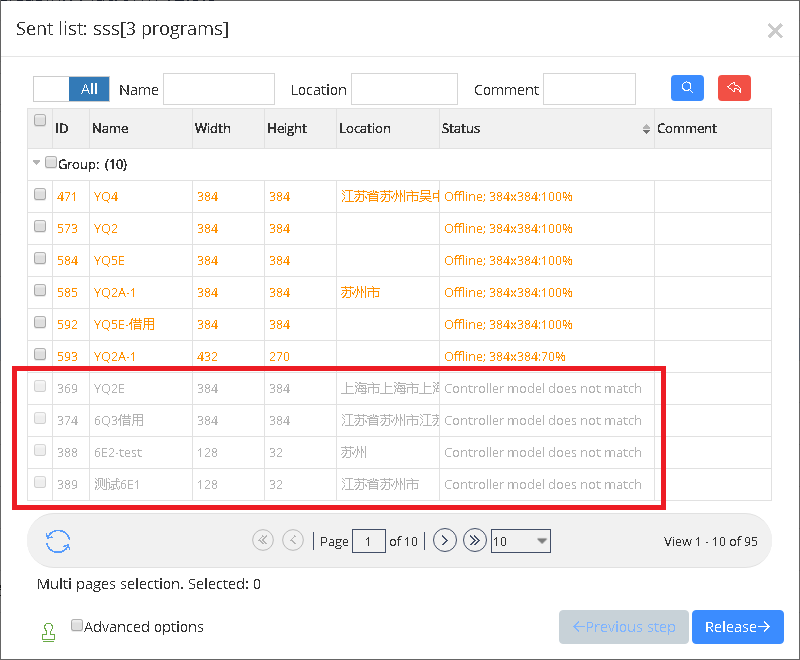
picture 5.10-14
5.10.5 Task management
User can query the task in the task management as shown in picture 5.10-15 ,also can check the task status in the same time.Also user can check the release process in the top right corner of the page.
